One post on Egypt just wasn’t enough, so following on from my post on the beautiful Island Temple of Isis at Philae, today I’m returning to look back on one of the most spectacular sites I’ve ever visited and the man responsible for it development, Ramses II or Ramses The Great. Born around 1303 BC, Ramses was Pharaoh of Egypt from 1279 BC until his death in 1213 BC. Like most pharaohs he was buried in the Valley of the Kings but his mummified body is housed today in the Cairo Museum. As an aside, if you ever visit Cairo, please don’t miss out on viewing the mummies! I’m no Egyptologist (although I’ll certainly love to work on a dig side over there!) but I believe Ramses was one of the longest serving and greatest of the Egyptian rulers. He was a successful military campaigner and a prolific builder. And that is where I’m taking us today … to what I think is his greatest building achievement, Abu Simbel. (Apologies for the quality of the photos … this trip was taken in 1996!)
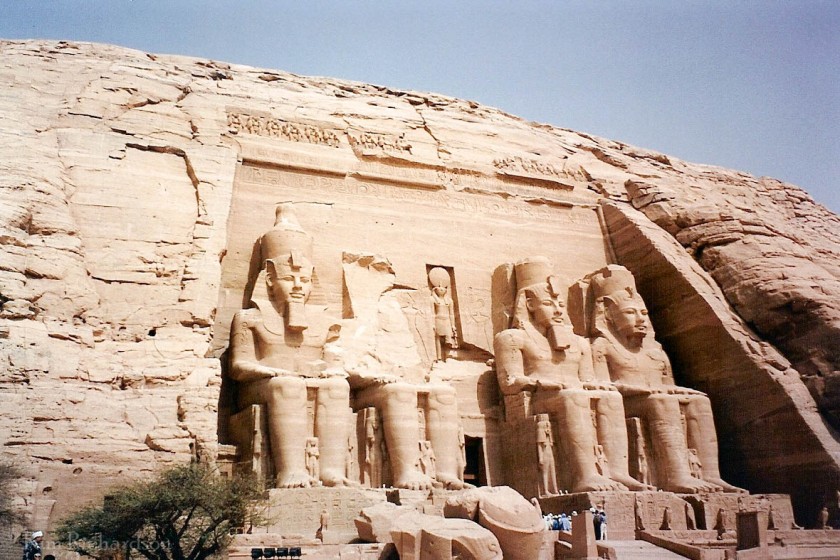
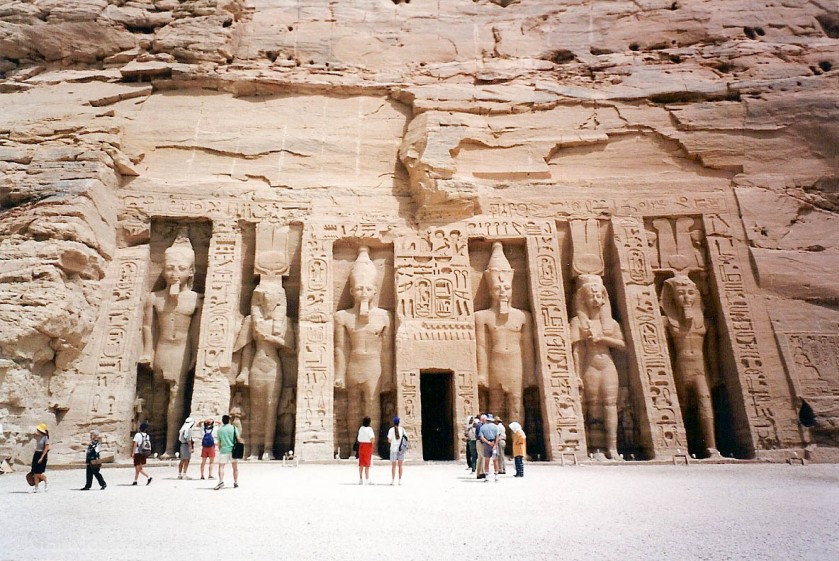
Abu Simbel consists of two massive temple structures, both of which are carved into rock. The site itself is in the southern part of Egypt, approximate 300km from the Aswan Dam. It is not located at the original building site. Just like the Temple of Isis at Philae, the Abu Simbel temples were relocated in the 1960’s to protect them from the rising waters of the Nile following the construction of the Aswan Dam. Now, I’m going to give you a tip about travelling to Abu Simbel … most companies that do tours or day excursions to Abu Simbel are going to approach the site from the water, via boat on Lake Nassar. Please, take the time to find a company that will take the longer route and approach the temples via land/road. Typically, this might mean flying to the area and getting a little bus to the site. This is what I did and it made the impact so much greater. Approaching from land the site appears like nothing by relatively flat land over the lake, nothing much to see. You will walk down a gradual decline towards the lake, and upon reaching the flat sands, you’ll turn to see the magnificent and truly massive Great Temple. It’s facade is marked by four large, 20 metre tall statues of Ramses II. The shock and overwhelming awe at the size of this place was heightened by the fact that, as the saying goes, “I never saw it coming”. And the memory of that first glimpse still gives me goosebumps to this day.
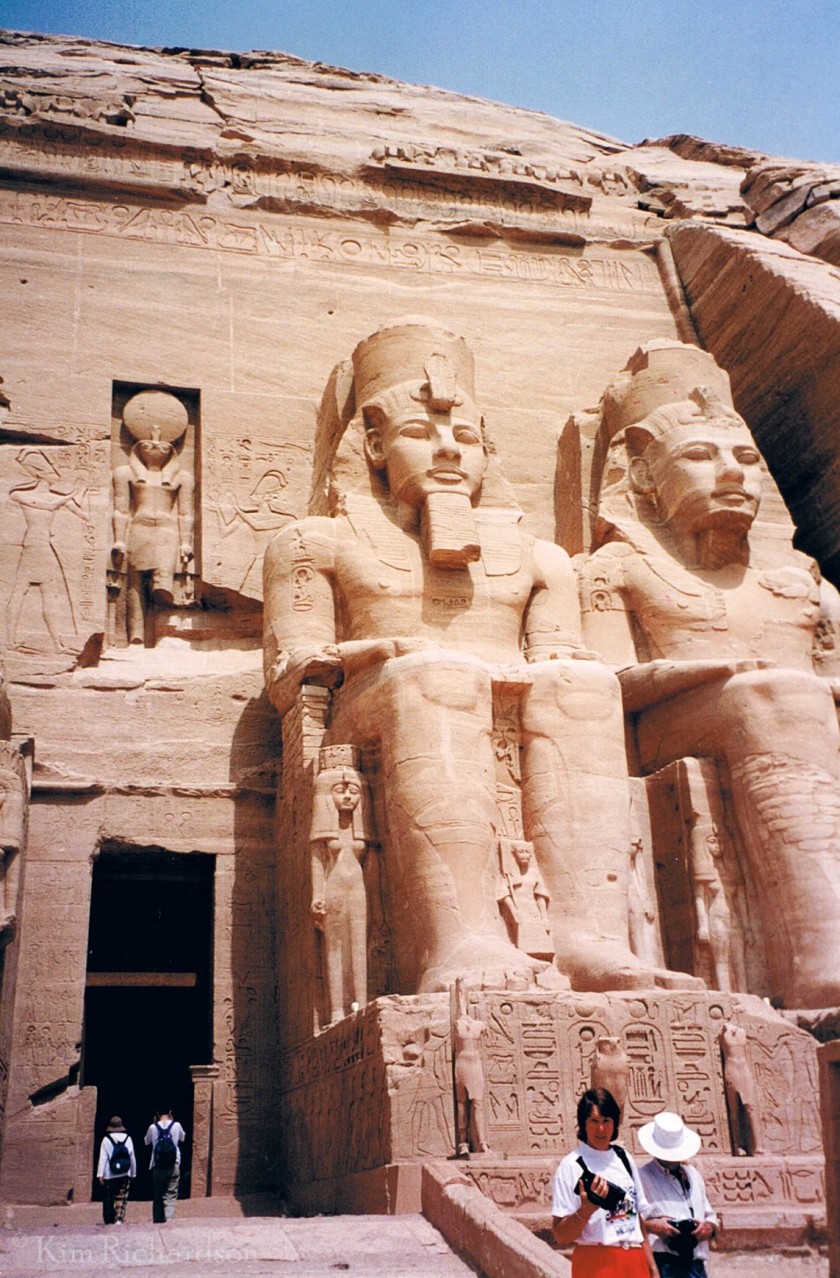
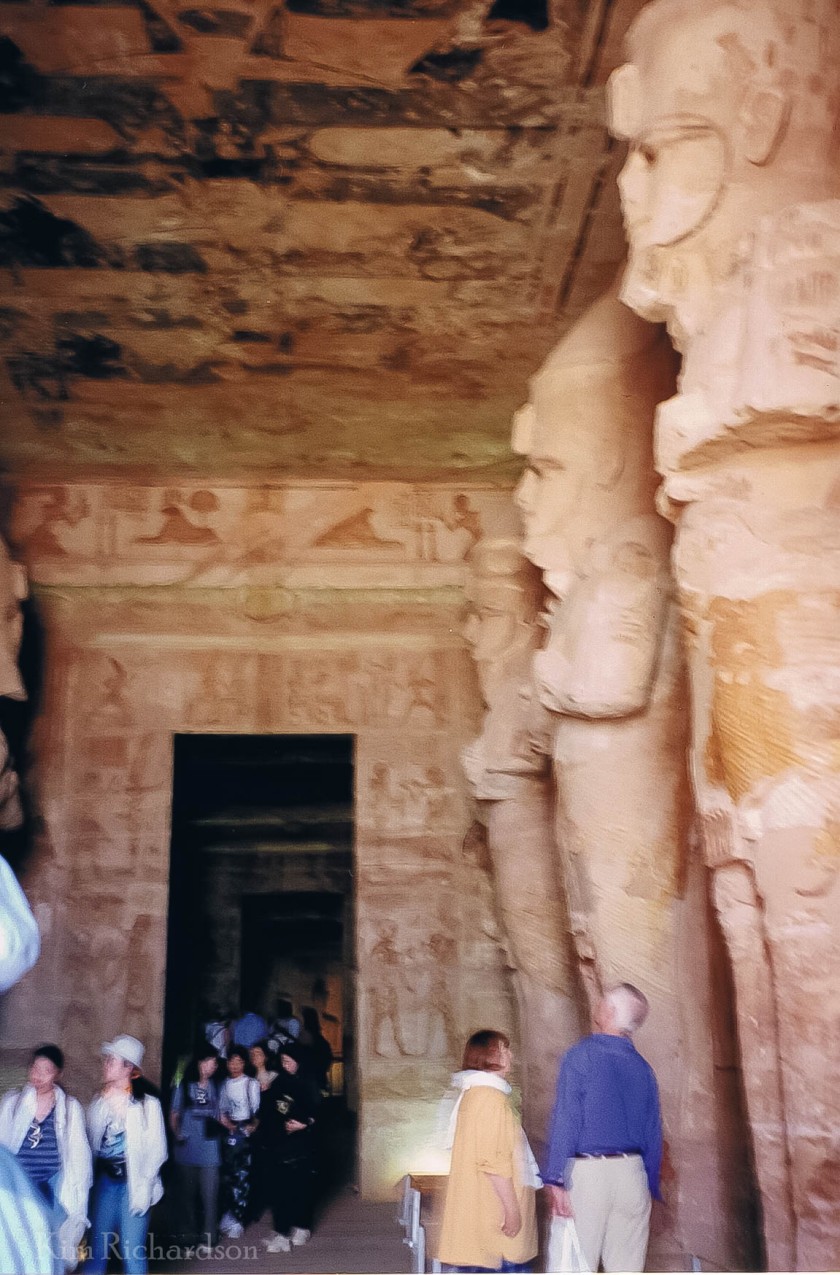
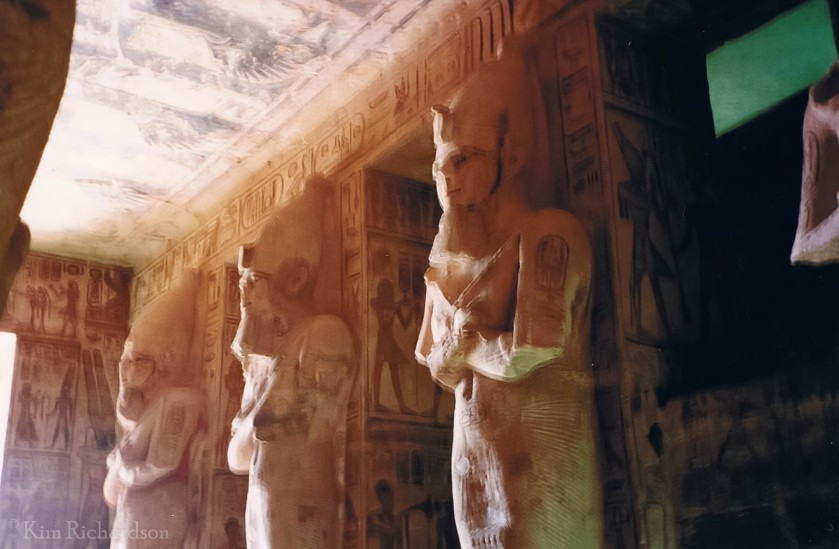
The Great Temple at Abu Simbel was built by Ramses II in 1265 BC and is basically a temple in honour of himself along with the Egyptian Gods – Amun, Ptah and Ra-Horakhty. When you enter the Great Temple and walk between the towering statues of Ramses, you will come to a chamber at the end, statues of all four of the gods mentioned are located in here. It is said that twice a year, the passage of the sun and the marking of the hours of the day will play out as each of these statute is illuminated in turn. With the exception of Ptah, the god of darkness and the underworld, who will remain in shadow.
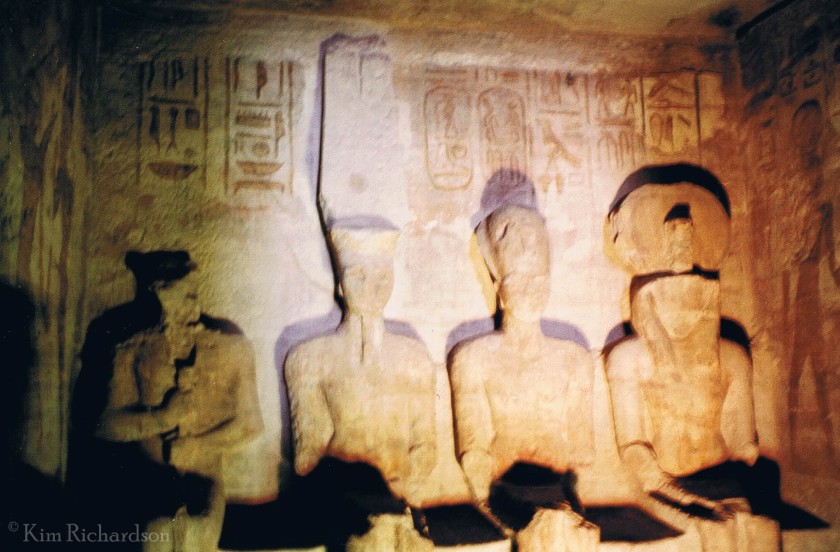
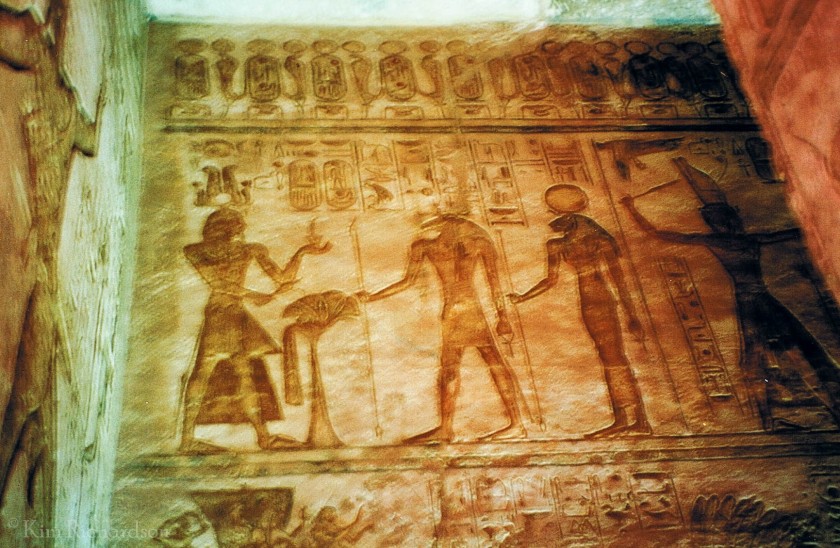
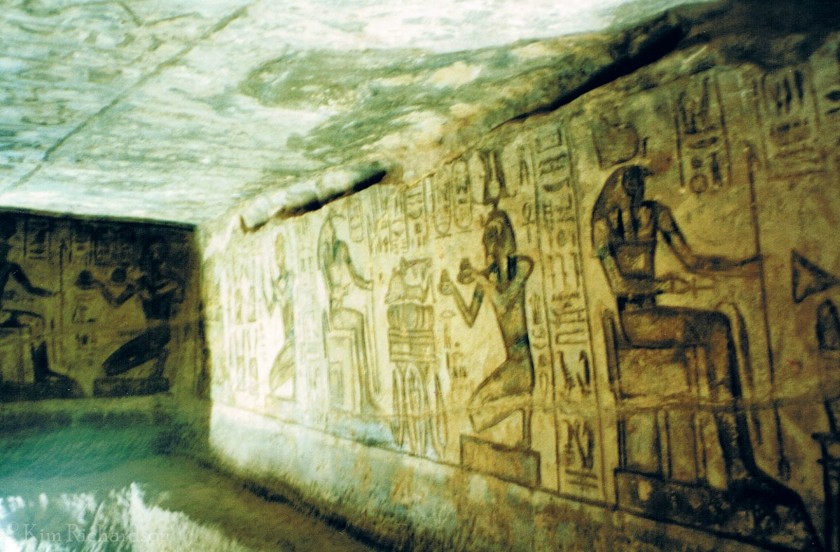
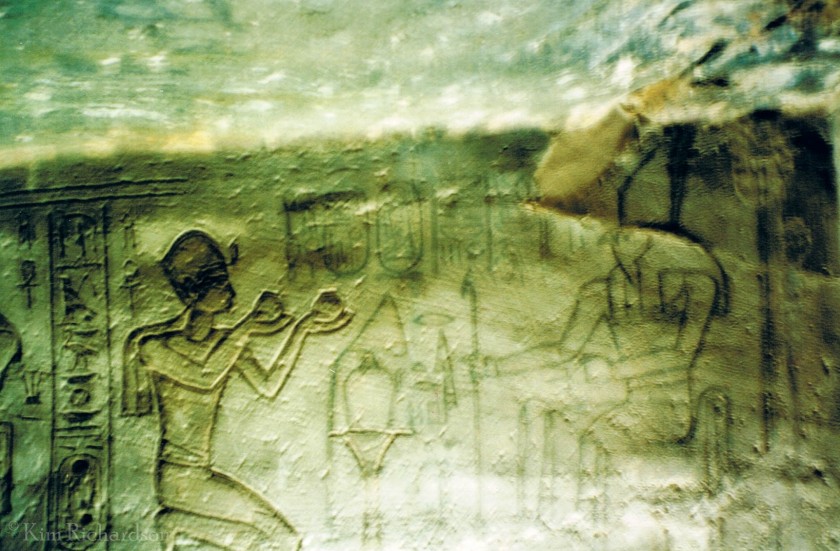
Situated next to the Great Temple of Abu Simbel is another, slightly smaller rock carved structure built by Ramses II. It is the Temple of Hathor and Nefertari (Nefertari was Ramses II’s wife). Here’s the awesome thing … only one other pharaoh had ever built a temple in his wife’s honour. But Ramses went one better – for the first time, the six statues of the King/Pharaoh and his wife which adorn the temple entrance, were carved to be the same height (10 metres in this case). It says a lot about the regard Ramses II had for his wife.
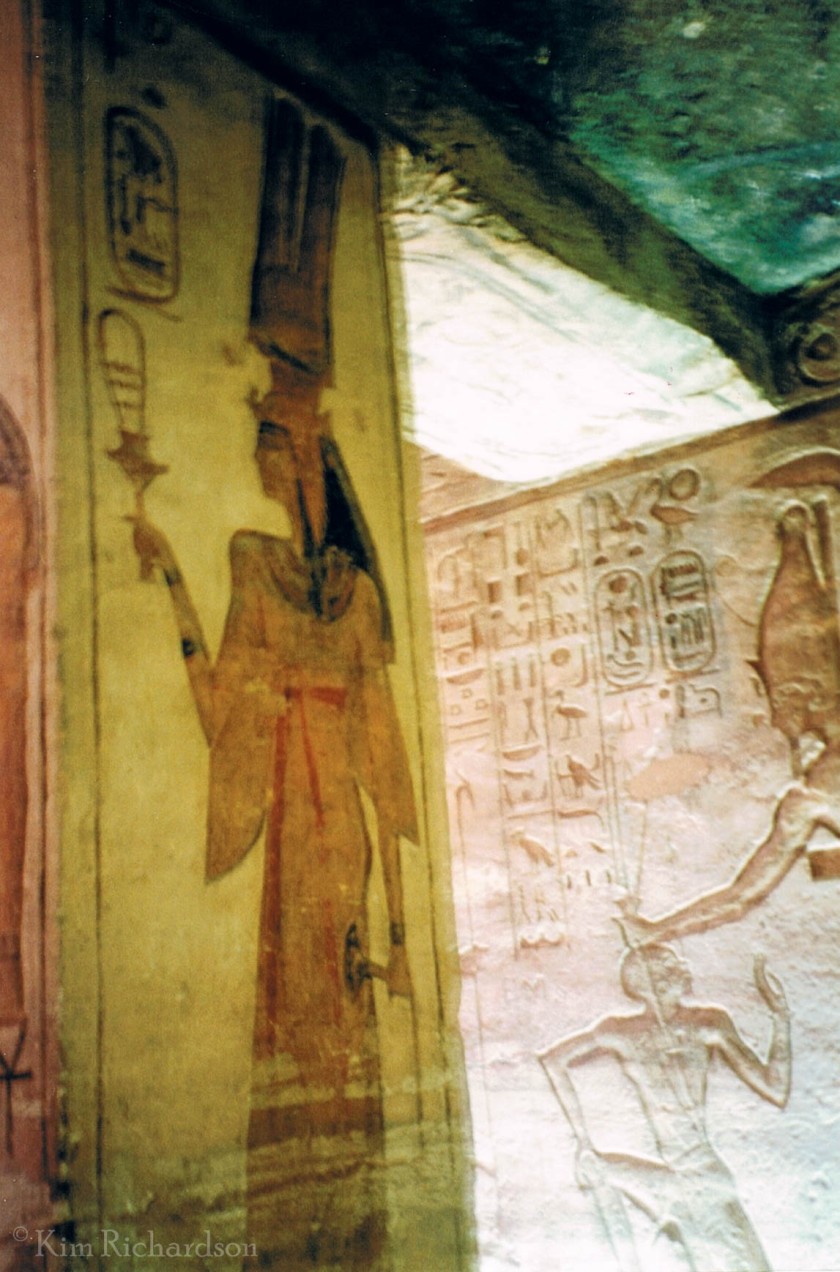
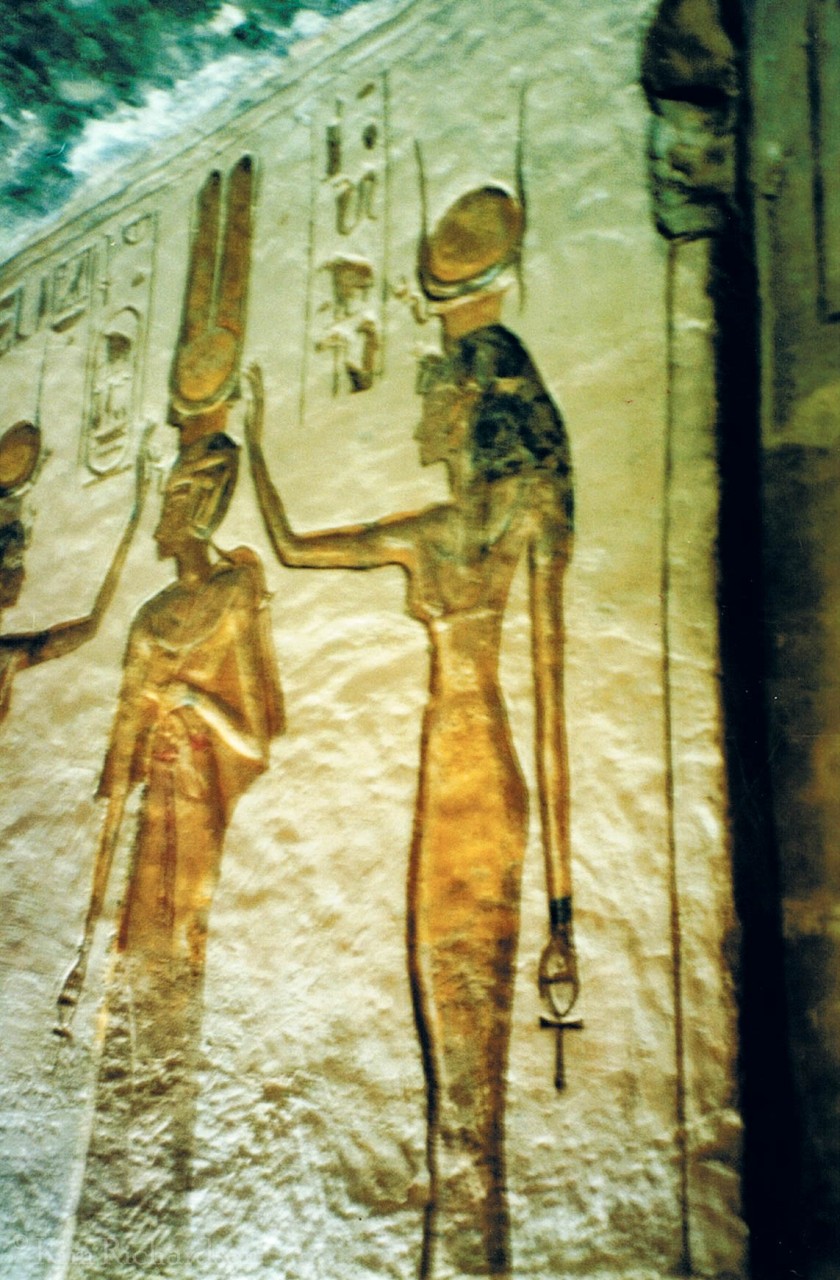
This post is part of my contribution to the A-Z Challenge for April 2016
Click here for a list and links to my other challenge posts!



Egypt has such a rich heritage! I can imagine the thrill of walking through walls of history. Was it very hot? We had a brief halt in Cairo on our way back from our first Euro trip. That’s the closest we got! 🙂
LikeLiked by 1 person
It was very hot! In the high 40’s (I recall hearing on one day that it cracked 50! … Celsius that is). But it didn’t feel that hot because the humidity was so low. Summers back home feel hotter.
The history is incredible! Such a thrill to visit these ancient places 🙂
LikeLiked by 1 person
Oh my gosh Kim! My inner nerd is going crazy with this post! What an amazing piece of history to see in person!!! Great post 🙂
LikeLiked by 1 person
Haha! Thanks, Niki. Your nerd and mine are so similar 😀 It’s an amazing place to visit though, the size and scale is staggering!
LikeLiked by 1 person
I plan to give little history lessons before we travel and then see the places w learn about, cultivate my children’s love of history 🙂 What an amazing adventure Kim!
LikeLiked by 1 person
That’s a great idea, Niki! I’ve always found it helpful knowing a bit about the history of where I’m going before I get there. I figure if I’ve got the historical facts straight first, then I can sit back and soak up the culture 🙂
LikeLiked by 1 person
Exactly! A history lesson you’d never forget! 🙂
LikeLiked by 1 person
I like that. Nicely put, Niki 🙂
LikeLiked by 1 person
How wonderful to have seen these. Great post, thanks.
LikeLiked by 1 person
Thanks, Helen 🙂 They are definitely incredible structures!
LikeLiked by 1 person
I love travelling with you. Your photos and descriptions…ohhh, makes me want to hop on the next flight and Go!! ❤️ Alexis
LikeLiked by 1 person
Thanks, Alexis! That’s exactly the kind of feeling I hope people get when reading my posts 😊 xx
LikeLiked by 1 person
Wow, you’ve taken some stunning pictures. What an amzing place!
LikeLiked by 1 person
Thanks, Simon! It’s such a unique place. I’d love to return one day 🙂
LikeLiked by 1 person
I would love to visit one day! 🙂
LikeLiked by 1 person
Be sure to tack Jordan on to your trip if you ever do Egypt 🙂
LikeLiked by 1 person
I will do! 🙂
LikeLiked by 1 person
Oh wow! To be there in person I cannot even begin to imagine how you felt, Kim. Talk about huge and even through your photographs the aura of this temple is powerful. Thank you for taking the time to share!! ❤
LikeLiked by 1 person
Thanks, AmyRose! I’m so pleased you could imagine how it feels to be standing in such a place! And thank you for taking the time to read & comment 😊
LikeLiked by 1 person
Amazing pictures Kim!
LikeLiked by 1 person
Thanks, Lyn! Hope you have a lovely Thursday xx
LikeLiked by 1 person
Thanks dear! I will just tell you right now, I am featuring you on Friday friends. I put one of the pictures from your Egypt post if that is ok.
LikeLiked by 1 person
Oh! What an awesome surprise! Yes, of course Lyn – you’re most welcome to use any of them. Thank you so much, that’s very kind of you! xox
LikeLiked by 1 person
OK great! See you there xx
LikeLiked by 1 person
You too dear!
LikeLiked by 1 person
This is a real goregous post, it reminds me my visit to Cairo
LikeLiked by 1 person
Thank you! Glad it brought back memories of your travels 🙂
LikeLike
how much History in this picture! You are Always fine.
many greetings, good evening 🙂
LikeLiked by 1 person
Thank you, Antonio! It’s just brimming with history. Hope you have a great Friday 🙂
LikeLike
Wow! I liked seeing the people next to the temple, and statues, putting everything in proportion. I’ve watched so many documentaries about ramses, this post was very interesting. Thank you Kim!
LikeLiked by 1 person
Thanks, Maria! I’ve always tried to avoid getting people in my shots. But you’re right, they really make a difference here in helping people see the size of the structures. He was a fascinating figure, certainly one of the major players in Egyptian history 🙂
LikeLiked by 1 person
Same here, but sometimes they make the photo stand out. Like yours 🙂
LikeLiked by 1 person
the pics are mind blowing. I am sure the don’t do justice to see it in the desert 🙂 loved this post 🙂
LikeLiked by 1 person
You’re right, Daisy. Photos do a great job but sometimes they just fall short of being able to capture everything! Glad you enjoyed it & happy Friday!! 🙂
LikeLike
I have always wanted to go to Egypt. So popular and so touristy (most of my friends and family have been), but yet, I never made it there. But, I will, one day. I’m sure of it. 🙂 Looking forward to browsing your blog one of these days and see what else you have been up to during your travels!!! Maybe we share a few countries we both like a lot.
Liesbet @ Roaming About – A Life Less Ordinary
LikeLiked by 1 person
It’s definitely worth a visit. I don’t usually like going to touristy places but sometimes there’s no avoiding it. The world is getting so much smaller and opening up more to travel!
I’ll be interested to see which countries we’ve both enjoyed 🙂
LikeLiked by 1 person
Oh WOW this looks incredible. Egypt had sort of fallen off my radar but now I’m dying to go! Great pics.
LikeLiked by 1 person
Thanks, Liz! I think it fell off a lot of people’s radar, particularly when all that domestic political unrest started a while back. It’s an amazing country and I always suggest that people see Jordan at the same time (if you haven’t already lol).
LikeLiked by 1 person
Incredible! Thank you for sharing!
LikeLiked by 1 person
Thanks, Michelle! Hope you’re having a lovely Friday xo
LikeLiked by 1 person
Thank you! It just started. 5:30 am here! I hope you are having a Happy Friday!
LikeLiked by 1 person
Haha! That time difference gets me every time 😄
7:30pm here and it’s been a great day, thank you!
LikeLiked by 1 person
In the summer of one year, I wanted to live virtually in Egypt for sometime, So I was looking for a novel on Egypt that will help me accomplish that. I had found a book “Nefertiti” by Michell Moran. I guess it must be the same Egyptian queen you have referred here. I am not only thrilled but also in awe that you have been there! Abu Simbel is such a delightful architectural site. I had watched a documentary of the statues being transferred away from the rising water. Your post just brought so many memories back! 🙂 And, Egypt is indeed a place to get goosebumps! I get that every time I read or hear about it!
LikeLiked by 1 person
What a great way to spend a summer! The book you found is about a different Egyptian queen. Nefertiti was married to the pharaoh Akhenaten and she was thought to be a very beautiful woman. I imagine the book must’ve been fascinating as her story is quite interesting. The architecture at Abu Simbel is amazing but I agree that the story of how they moved the structure is so incredible. So glad you enjoyed the post!
LikeLiked by 1 person
Oh yes, I recall now.. Akhenaten.. who had changed the custom of worshiping Ra, and started worshiping Aten.. The story was very interesting, I just seem to forget and mix up sometimes! 🙂
LikeLiked by 1 person
Completely understandable – there’s a stack of history there, it’s almost impossible to keep it all straight (unless you happen to be an Egyptologist).
LikeLiked by 1 person